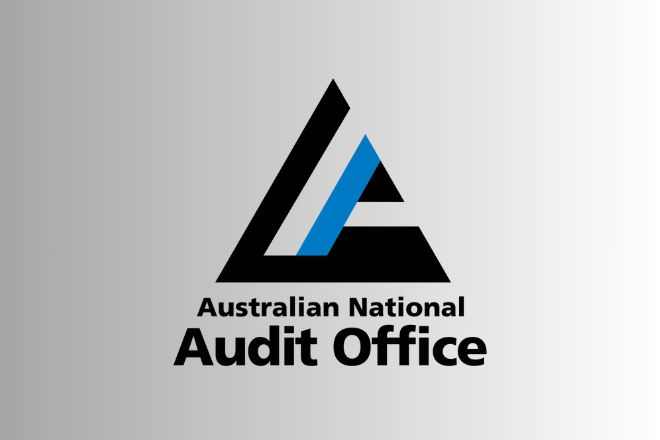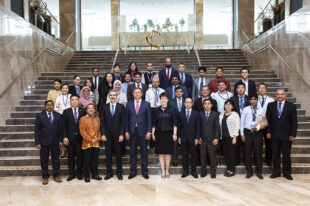Lessons from SAI Australia on Auditing Climate Change Programs

Author: Australian National Audit Office
Introduction
The Australian National Audit Office’s (ANAO) climate change-related audits are generally conducted under the Auditor-General’s performance audit mandate. The ANAO’s performance audit activities involve audits of the performance of Australian Government programs and entities with a focus on assessing economy, efficiency, effectiveness, ethics, and legislative and policy compliance. In 2023–24, the ANAO tabled 45 performance audits in the Australian Parliament, with six audits relating to climate change, energy, the environment and agriculture sectors.
The ANAO’s recent performance audit activities have highlighted several lessons from auditing climate change-related programs across the Australian Government. Three key themes are explored in this paper:
- coordination of climate action across government;
- conflict management in funding climate change programs; and
- performance measurement and reporting.
Coordination of climate action across government
In Australia, the Climate Change, Energy, the Environment and Water (CCEEW) portfolio manages the range of programs that are intended to reduce the impact of climate change and improve environmental outcomes. Other Australian Government portfolios that have climate change responsibilities include:
- Foreign Affairs and Trade: Leads Australia’s international response to climate change through multilateral negotiations, international trade and investment, and climate-related support through development assistance;
- Attorney-General’s: Identifies climate change as a threat that has the potential to impact policing through severe weather events and interruption to essential services;
- Defence: Considers the national security implications of climate change in Australia and the region;
- Agriculture, Fisheries and Forestry: Considers the risks and opportunities climate change poses for Australia’s primary industries; and
- Home Affairs: Coordinates efforts in responding to and recovering from natural disasters.
As of January 2024, the ANAO identified 127 programs delivered by 42 different Australian Government entities that are specifically related to climate response, and policies or programs related to climate change governance, energy, agriculture, or the environment more broadly.
Multiple entities delivering diverse programs without strategic coordination presents a risk for effective and efficient delivery of desired outcomes. The absence of a cohesive strategic framework to guide the delivery of programs to achieve Australia’s climate change commitments was a key finding raised in Auditor-General Report No. 10 2023–24 Governance of climate change commitments. The audit examined the effectiveness of the Department of Climate Change, Energy, the Environment and Water’s (DCCEEW) governance arrangements supporting the implementation of the Australian Government’s climate change commitments. The audit noted that DCCEEW was tracking over 100 climate- and energy-related measures being delivered across government, but found that there was no single structured ‘plan’ or strategy that linked the activities being undertaken to the achievement of emissions reduction targets.
The ANAO made a recommendation aimed at developing a strategic approach to enable measurement of activities to the achievement of commitments, which was agreed by the department.
Conflict management in funding climate change programs
As countries accelerate their climate action to meet their domestic and international commitments, climate-related public spending has increased.(1) In Australia, the 2024–25 federal Budget committed $22.7 billion over the next 10 years to invest in ‘maximising the economic and industrial benefits of the move to net zero’ and make Australia ‘a renewable energy superpower’. This is in addition to significant funding commitments from previous budgets, including:
- $24.9 billion of climate-related spending committed in the October 2022–23 Budget;
- $3 billion from 2023–24 to 2029–30 to support Australia’s net zero economic transformation in the Mid-Year Economic and Fiscal Outlook 2023–24; and
- $4.6 billion in climate-related spending commitments for climate action out to 30 June 2030 in the 2023–24 federal Budget.
A significant amount of Australian Government’s climate- and environment-related funding is delivered to other levels of government or to non-government organisations. Grants represent 37 per cent of total budgeted expenses for DCCEEW in 2024–25. Appropriate arrangements to manage conflicts of interest when providing government funding are important for building and maintaining public confidence in the government to manage sensitive, high-value and at times contentious climate policies and programs.
In Auditor-General Report No. 24 2023–24 Issuing, Compliance and Contracting of Australian Carbon Credit Units, the ANAO assessed the effectiveness of the Clean Energy Regulator’s issuing, compliance and contracting activities related to Australian Carbon Credit Units (ACCUs). ACCUs are issued to eligible projects for carbon abatement and can be sold to the Australian Government or organisations to offset their carbon emissions.
In the audit, the ANAO found that a legislative requirement to provide ongoing ministerial updates of interests declared by Emission Reduction Assurance Committee (ERAC) members was not met. The ERAC’s role includes providing independent expert advice on the appropriateness of ACCU generation methods to the responsible minister. Appropriate disclosure and management of potential conflicts is critical to maintain ERAC’s independence and public confidence in the scheme. The ANAO made a recommendation to implement procedures for notifying the responsible minister of interests declared by ERAC members as required by legislation. The recommendation was agreed.
Performance measurement and reporting
Fit-for-purpose performance measurement frameworks enable an assessment of the extent to which government programs are achieving objectives. In Australia, the Public Governance, Performance and Accountability Act 2013 (PGPA Act) governs the planning, management and reporting of public sector activity. The PGPA Act recognises that performance of the public sector is more than financial, and introduced a framework for measuring and assessing non-financial performance, including requiring monitoring and evaluation of government programs.
A common finding raised by the ANAO in climate-related audits in relation to the usefulness of performance measurement frameworks is heavy reliance on project-level performance information, which does not provide insights into the progress or impact of the relevant programs on overall objectives or targets. The absence of meaningful performance information makes it more difficult for entities to effectively manage program delivery, including addressing emerging risks and issues, and for stakeholders to judge the impact and effectiveness of the public funding. It also results in a limited evidence base on which the development of new policies can be based.
This finding was raised in a number of recent audits, including:
- Auditor-General Report No. 20 2017–18 Low Emissions Technologies for Fossil Fuels, which found that the absence of sufficient program-level performance reporting limited visibility and oversight of program achievements, and the ability for government to make decisions on the future of the programs;
- Auditor-General Report No. 19 2021–22 Management of Threatened Species and Ecological Communities under the Environment Protection and Biodiversity Conservation Act 1999, which found that performance reporting did not indicate how listing and conservation planning activities had contributed to the desired outcomes; and
- Auditor-General Report No. 2 2023–24 Wildlife and Habitat Bushfire Recovery Program, which noted that not all projects within the program were reporting against targets or outcomes, and as such progress data could not be compared or aggregated to provide a program-level assessment of progress.
In each of the audits, the ANAO made a recommendation for the relevant entities to establish and undertake appropriate monitoring and evaluation activities to determine the impact of their programs on achieving policy objectives.
SAI Australia’s future climate audit activities
Auditing climate change impacts, risks and resilience is a fast-evolving space, and the ANAO considers it an area of focus for future audit activities.
Under the Commonwealth Climate Disclosure Policy introduced in March 2024, all Commonwealth entities and companies will be required to publicly report on their exposure to climate risks and opportunities, as well as their actions to manage them. As the public sector auditor, the ANAO is working with the Department of Finance to develop an assurance and verification regime for climate disclosures. Readiness to audit climate disclosures will be a key focus for the ANAO in 2024–25.
More broadly, the ANAO is developing a multi-year Climate Change and Environment Audit Strategy. This strategy will augment the ANAO’s Annual Audit Work Program and support the ANAO to produce a coordinated body of work to audit Australian Government entities’ management of climate-related risks. In addition to its primary role, the ANAO is an active member of the external public sector audit communities and participates in international and regional forums to share knowledge and promote the professional standing and influence of government auditing. In September 2024, the ANAO co-hosted the Pacific Association of Supreme Audit Institutions (PASAI) Regional Working Group on Environmental Auditing (RWGEA). The theme for this meeting of RWGEA was ‘Auditing in the Blue Economy’, focusing on two sub-themes: oceans and waterways; and climate change and natural disasters. During the three-day event held in Canberra, Australia, approximately 50 public sector auditors with an interest and specialisation in environmental auditing from Australia, New Zealand and the Pacific region gathered to share knowledge and develop capability in this rapidly emerging area of audit.






